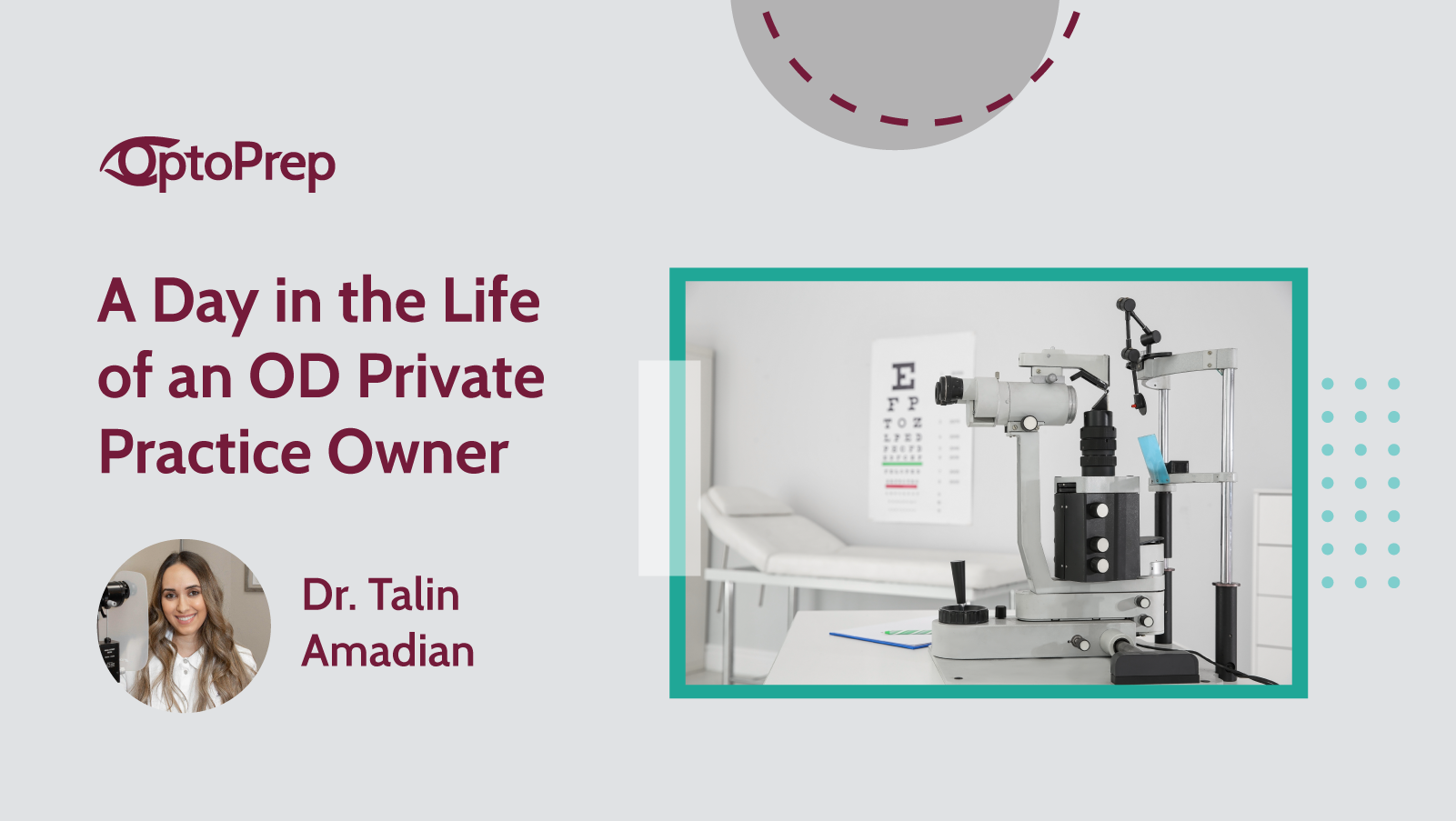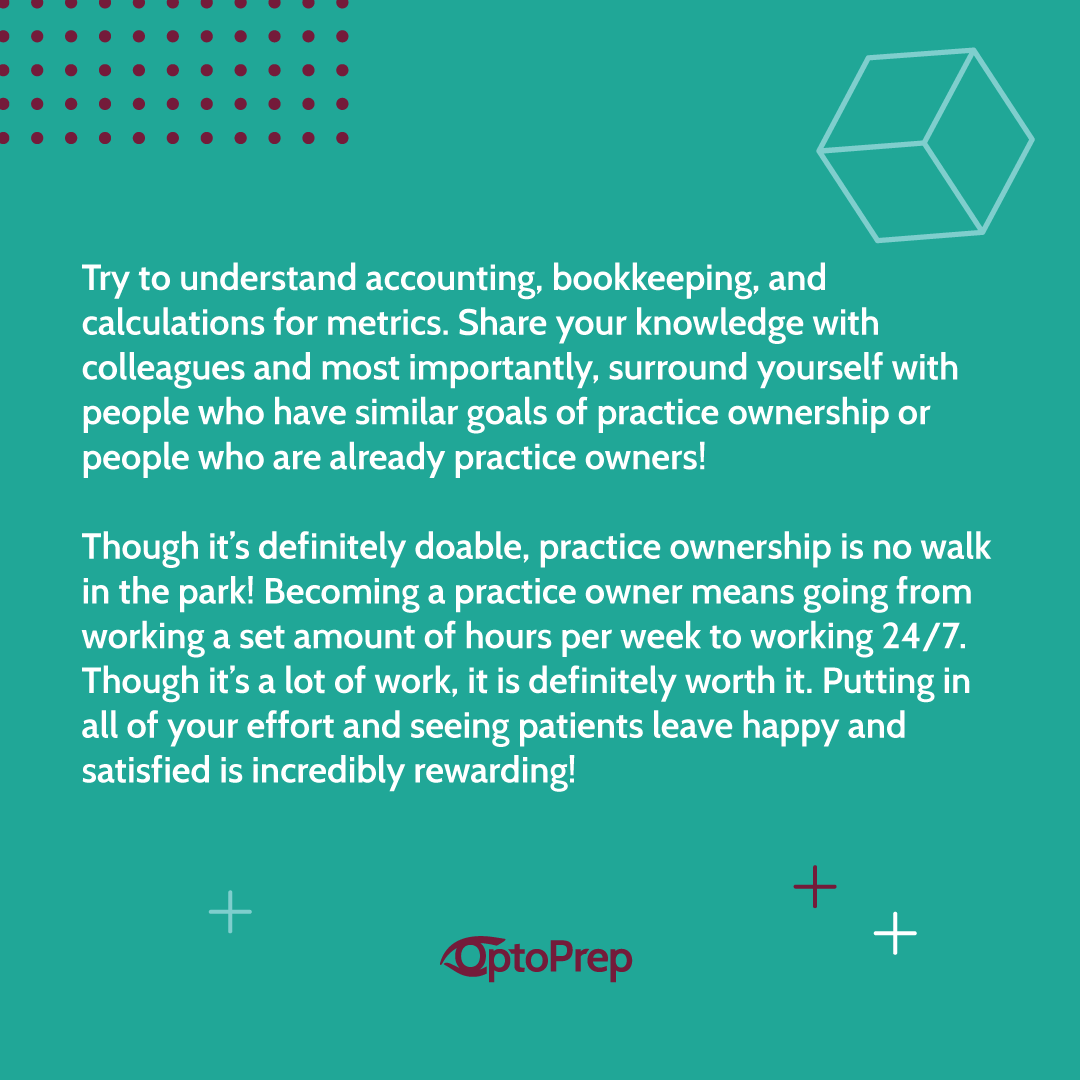
 As a practice owner, the number one question I get asked all the time is, “Do you have any book recommendations that would put me on the path to becoming a practice owner?”
As a practice owner, the number one question I get asked all the time is, “Do you have any book recommendations that would put me on the path to becoming a practice owner?”
Though I love to read, there isn’t a book that outlines it all. In fact, I never felt absolutely ready to have my own practice, as I felt like there were a lot of things I had absolutely no idea how to do.
Though there's a lot that I'm learning every day. Being a practice owner isn’t exactly how I imagined it would be, but I still love what I do! Here's what my actual day-to-day as a practice owner looks like.
I want to start by saying that before I became a practice owner, I was working as an associate at another office. I would see patients 5-6 days a week and still felt like I had time to do other things after work and on my days off.
Now, I officially see patients 4 days a week and reserve the rest of my time for administrative tasks. There's a lot of work that goes into the operations of the business including payroll, accounts payable, correspondence, bills, and marketing.
Even if you delegate tasks to others on your team, it’s best to stay up to date and understand what needs to be prioritized each week. This is why I like to set aside two days out of my week to be able to work uninterrupted, as it can be a little hectic in between patients.
Some practice owners like to get these things done in between patients, but I like to do higher-level tasks when I know I won't be distracted. I reserve smaller tasks such as prescription requests and emails for in-between patients on my clinical days!
So what do my clinical vs. non-clinical workdays look like? Here's a glimpse.
Clinical Work Days
On a clinical workday, I usually wake up two hours before the office opens. This gives me enough time to have my coffee, get ready, and of course, drive to work! I always account for a little bit of cushion for my commute in case I get stuck in traffic. I like to get to the office about thirty minutes before the first patient in order to get set up for the day.
I like to check my email, skim through the day’s patient charts and develop a game plan of everything that needs to be completed before the end of the day. At this time, I’ll prioritize small tasks that need to be tackled throughout the day and work through those.
As I go about my day, more tasks are added to my to-do list like phone messages and even more emails to respond to (they never seem to end!), so I just add them all to my list.
After I'm done with all of my patients for the day, I like to skim through my charts one last time to make sure everything is accounted for. This is when I like to double-check all of my CPT and ICD-10 codes, notes, and prescriptions that need to be filled.
After I’m done with these, I’ll move on to my to-do list and keep going until it’s all done!
Non-Clinical Word Days
On a non-clinical workday, I like to focus on the business and operational side of things! Whether it’s payroll or managing the books, this is when I take a look at finances and the business management portion of the practice. This is also a good time to look at anything that needs to be ordered while checking on supply and inventory.
Twice a month I also look at metrics that give me a sense of how the practice is doing.
-
- Are we selling the same amount as we did last month?
- Are we seeing more comprehensive exams?
- What is our conversion rate?
This is the part I struggled with the most in the beginning, when my non-clinical days were actually longer than my clinical days. This is also the part where I had to do a lot of research on my own to figure out what actually needed to be done.
Thankfully, many of my friends and colleagues with their own practices were so helpful and willing to answer any questions, so I never felt alone as I was getting started.
So What Can You Do To Get Ready for Practice Ownership?
I always recommend two things: research and networking! Do your own research, and constantly stay educated on business management terminology and practices.
Try to understand accounting, bookkeeping, and calculations for metrics. Share your knowledge with colleagues and most importantly, surround yourself with people who have similar goals of practice ownership or people who are already practice owners!

Though it’s definitely doable, practice ownership is no walk in the park! Becoming a practice owner means going from working a set amount of hours per week to working 24/7. Though it’s a lot of work, it is definitely worth it. Putting in all of your efforts and seeing patients leave happy and satisfied is incredibly rewarding!
~ Dr. Amadian
